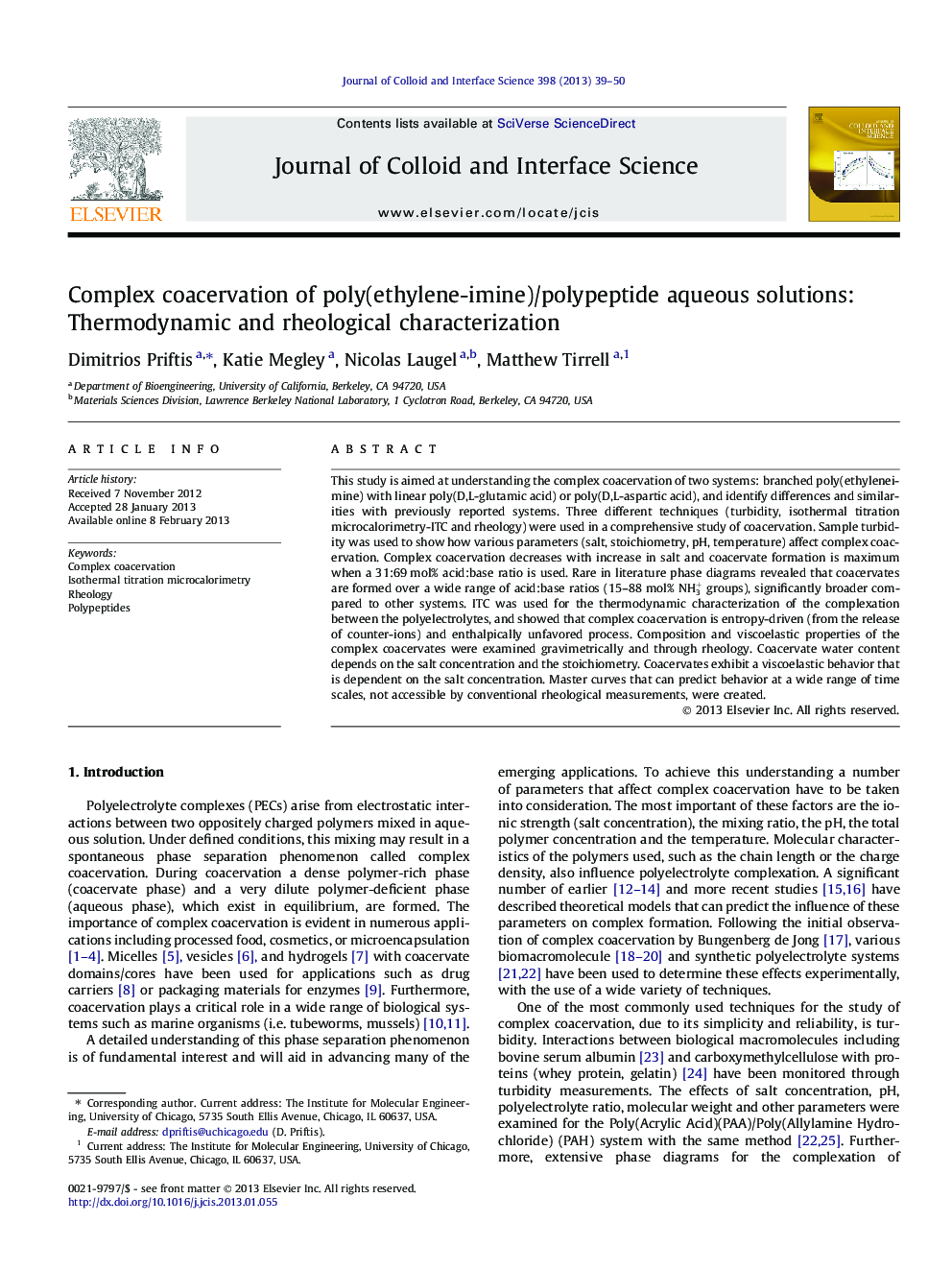| کد مقاله | کد نشریه | سال انتشار | مقاله انگلیسی | نسخه تمام متن |
|---|---|---|---|---|
| 607865 | 1454597 | 2013 | 12 صفحه PDF | دانلود رایگان |

This study is aimed at understanding the complex coacervation of two systems: branched poly(ethyleneimine) with linear poly(D,L-glutamic acid) or poly(D,L-aspartic acid), and identify differences and similarities with previously reported systems. Three different techniques (turbidity, isothermal titration microcalorimetry-ITC and rheology) were used in a comprehensive study of coacervation. Sample turbidity was used to show how various parameters (salt, stoichiometry, pH, temperature) affect complex coacervation. Complex coacervation decreases with increase in salt and coacervate formation is maximum when a 31:69 mol% acid:base ratio is used. Rare in literature phase diagrams revealed that coacervates are formed over a wide range of acid:base ratios (15–88 mol% NH3+ groups), significantly broader compared to other systems. ITC was used for the thermodynamic characterization of the complexation between the polyelectrolytes, and showed that complex coacervation is entropy-driven (from the release of counter-ions) and enthalpically unfavored process. Composition and viscoelastic properties of the complex coacervates were examined gravimetrically and through rheology. Coacervate water content depends on the salt concentration and the stoichiometry. Coacervates exhibit a viscoelastic behavior that is dependent on the salt concentration. Master curves that can predict behavior at a wide range of time scales, not accessible by conventional rheological measurements, were created.
Figure optionsDownload high-quality image (92 K)Download as PowerPoint slideHighlights
► Coacervation can be tuned by changes in salt, pH, charge ratio, temperature.
► Poly(ethyleneimine) coacervates can be formed over a wide acid:base ratios.
► Coacervation is an entropy-driven process from counter-ion release.
► Coacervate composition and rheological properties can be tuned by salt.
► Rheological behavior at a range of time scales is predicted.
Journal: Journal of Colloid and Interface Science - Volume 398, 15 May 2013, Pages 39–50